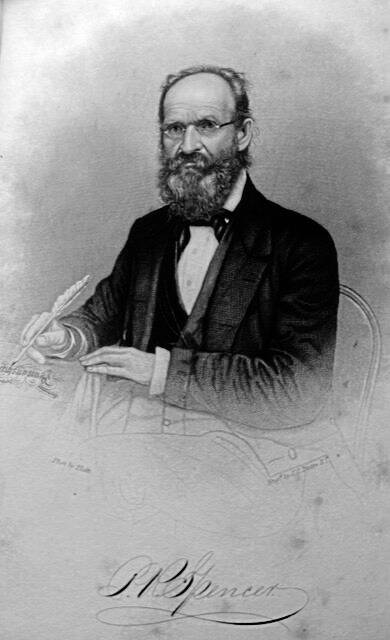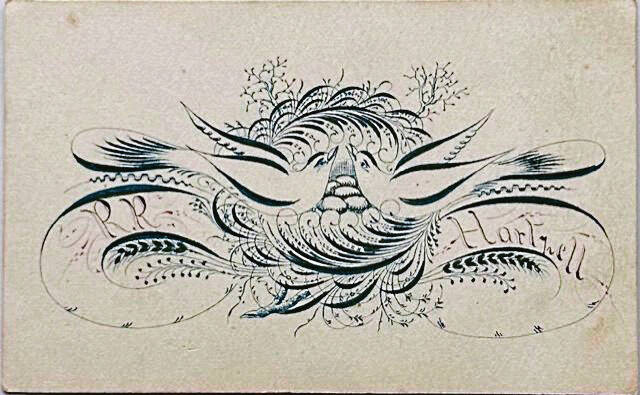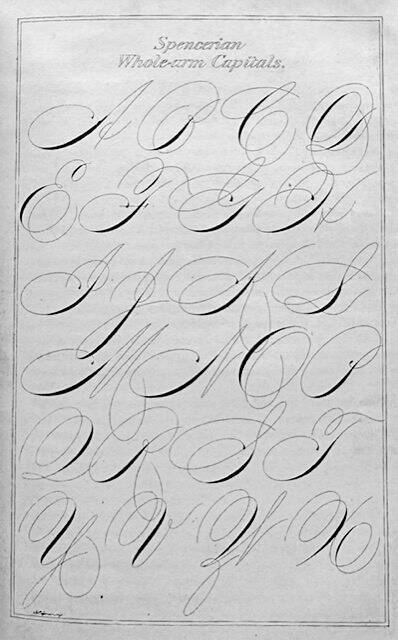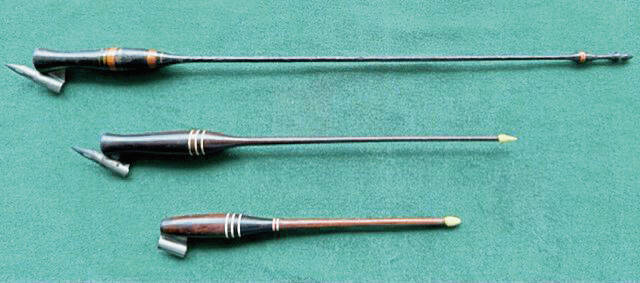Remember When: Pride in penmanship grew in popularity as 1800s rolled into 1900s
Editor’s note: This is the second in a two-part series on pens and penmanship.
As beautiful writing instruments became more available in the 1800s, an interest in creating beautiful penmanship also bloomed.
The European style of penmanship was called “round hand.” Although it looked like cursive, each letter was printed separately.
In the United States, writers developed styles of their own. Many of the most famous penmanship masters were from, or educated in or around, Western Pennsylvania. Perhaps the most famous was Platt Rogers Spencer of Geneva on the Lake, Ohio, who became known as the “Father of American Penmanship.”
Inspired while observing the waves and the rounded pebbles on the shore of Lake Erie, he decided to incorporate these shapes into his style of handwriting. Instead of printing each letter separately, he used these curved shapes to join the letters. This made writing much faster and more pleasing to the eye.
Spencer spent the early part of his life as an itinerant penman. He would travel from town to town and set up in the parks to write letters for a fee for the citizens of the community.
Many who were not gifted writers would dictate letters to him to be sent to family and friends. He would also make calling cards and legal documents.
When he had exhausted the work in one small town, he would move on to the next. He sometimes found himself answering letters he had written previously.
Itinerant penman were colorful figures and were regarded as scholars and artists. Spencer also was a poet and was known as a heavy drinker. His life was changed by a woman named Persis Duty, who he married in 1828.
He settled down, stopped drinking and opened a penmanship school in a log cabin outside of Geneva, Ohio. He called his school Jericho.
From the mid 1800s until the 1920s, Spencerian penmanship was the most common style taught in American schools. After 1900, the schools in this area adopted a style known as the Palmer Method after its founder, Austin Palmer. It was a simplified version of the Spencerian system in which the letters were shaped by the movement of the arm rather than the fingers of the hand holding the pen. The Palmer Method became the most popular style of cursive writing in the United States.
A few schools in this area used a style of cursive known as the Peterson Directed Handwriting system. Peterson’s style focused on maintaining a smooth rhythm while writing. These methods looked very much alike, but there were small variations in the shapes of some of the capital letters.
Many teachers and most students today cannot read or write cursive. Some students who can utilize it as a type of secret code, passing notes to each other that others cannot read.
Many younger people no longer use written signatures, opting instead for wavy illegible lines. They can’t read important historical documents, such as the Declaration of Independence and the U.S. Constitution, or old handwritten family letters or recipes.
The style of penmanship that many of the finest writers used was sloped at a greater angle than normal writing. It led to the development a new pen holder called an oblique.
To demonstrate their skill, many of the finest penmen developed an art form called “flourishing.” The oblique pen was ideally suited for this purpose.
In flourishing, the writer would hold his pen with the nib pointing toward the center of his body and the top of the pen pointing to the two o’clock position. Only the nib, and possibly one knuckle of the little finger, rested on the paper.
The pen was moved from the left to the right in quick arc-like motions and the paper was rotated beneath the pen nib with the other hand. The art was often referred to as off-hand flourishing and usually depicted birds and feathers.
Extremely complex pictures could be created in a matter of minutes. These pictures were used as advertisements by master penmen to attract students for instruction. Original off-hand flourishing pieces have become very valuable and are highly sought-after by collectors.
Remove the ads from your TribLIVE reading experience but still support the journalists who create the content with TribLIVE Ad-Free.







